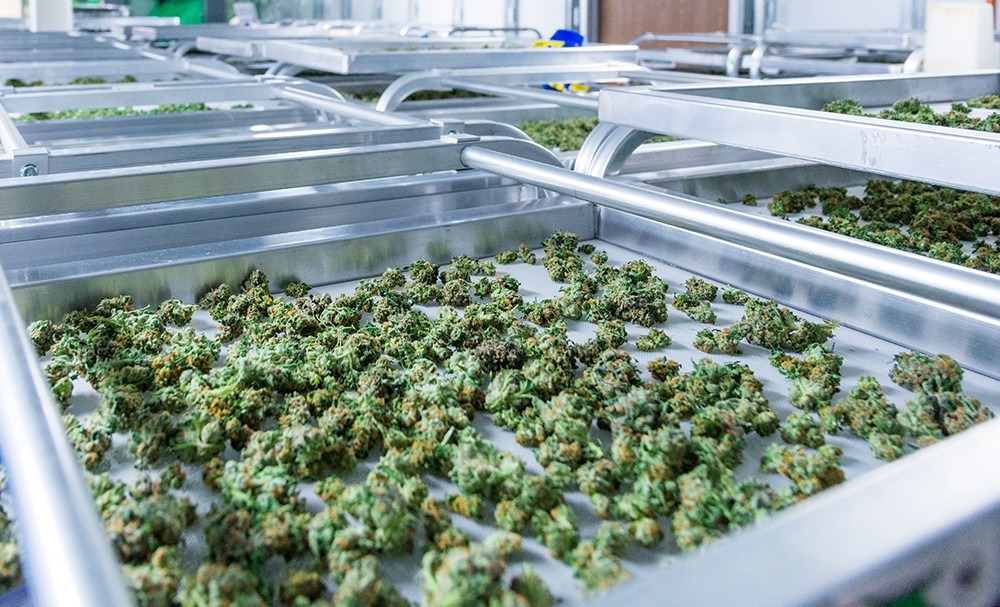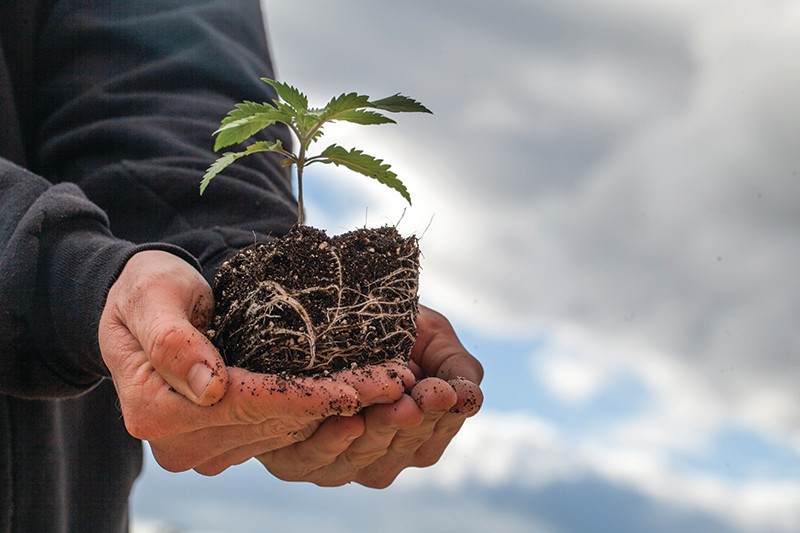VARIABILITY IN REGULATIONS AND STANDARDS
Most states test for pesticides, microbes, mycotoxins, moisture content, water activity, potency, and residual solvents. While they aren’t included everywhere yet, tests for heavy metals (lead, cadmium, arsenic, etc.), cannabinoids, and terpenes are common. Even the tests common across all states are subject to varying requirements between states, and no states include exactly the same analytes on their lists. For example, some states require testing for twenty pesticides, but California’s new regulations specify sixty-six. The maximum allowable limits for each analyte tend to vary, as well.
Shimadzu’s Clifford pointed out “one similarity is the testing for potency of cannabinoids, primarily THC, THCA, CBD, CBDA, CBG, and CBN. For heavy metal testing, many states test for arsenic, cadmium, lead, and mercury. Generally speaking, though, testing from state to state is more different than similar.”
Robert Teitel, president of Iron Laboratories, agreed. Because Iron operates in medical-only Michigan and adult-use Oregon, Teitel and his team have an uncommon opportunity to observe how vagaries of state law affect the industry’s best efforts to provide a clean, reliable product. “The reality is that at this time there are not any standards from state to state when it comes to cannabis testing. Being that there is not a national standard of testing means that every state has somewhat different rules,” he said. “But, we’ve seen Oregon really take the lead when it comes to cannabis testing. They set standards that all labs within the state must follow, and [the standards are] administered by the Oregon Environmental Laboratory Accreditation Program. Labs in Oregon have to operate with an environmental accreditation.
“At a minimum,” he added, “most states are requiring pesticide screenings—although every state has different banned pesticides—and potency profiles, typically [including] just THC, THCA, CBD, and CBDA.”
Brauninger of A2LA added, “To date, there is no uniform approach to managing quality of the laboratory output. Some states have simply placed relativity generic requirements for laboratory quality, while others such as California have come up with quite an extensive regulatory scheme. Most states are somewhere in between.”

IMPACT ON OTHER SECTORS OF THE INDUSTRY
So, how does this patchwork of unpredictable testing regulations and standards affect other companies in the cannabis industry? Oregon-based Sweet Cannabis, a production, processing, and distribution company, recently expanded to Nevada. Sales Director Tom Bowers said testing mandates are very different between the two states.
“Nevada’s rules and framework contain requirements that some consider obsolete for the industry, such as pharmacopeia methods for potency determination, when better methods exist,” he said. “Oregon is leading on pesticide testing, while Nevada tests more broadly for things like mycotoxins, which aren’t required in Oregon. There are other small differences, such as increments for testing batches. For instance, in Oregon thirty pounds of flower would have to have two samples pulled, one for each fifteen pounds. In Nevada, flower is tested per five-pound increment, so three times as many tests are required.”
Additionally, Bowers noted that Nevada’s state oversight and regulation of labs is still in a developmental phase, which may lead to variances between laboratories. Recently, Nevada suspended the licenses of a number of labs without explicitly stating the reasons for the suspensions, leaving fewer options for producers and processors and making it difficult for companies to establish long-term relationships. On the other hand, Oregon has a more robust accreditation system with direct oversight at a state regulatory level. “We’ve spent quite a bit of time finding stringently thorough laboratory partners in both Oregon and Nevada, since testing is of paramount importance for consumer safety and is also one of our top three business expenses,” Bowers said.
To illustrate, before Sweet Cannabis launches an edible in either state, the product must be sent to a lab for testing in three stages: as raw material (flower), in concentrate form, and in its final form. Each stage can cost hundreds, if not thousands, of dollars for each product batch.

HURDLES TO STANDARDIZATION AND EXPANSION
A lack of federally funded cannabis research, coupled with the lack of federal oversight and guidance about safety standards, hampers officials’ ability to establish regulations and labs’ ability to design and perform tests that are both useful and cost-effective. But that’s not the only way in which a unified standard could benefit the industry as a whole. For one thing, economies of scale likely would have a positive effect on everyone’s bottom line as labs expand into additional state markets. As things stand now, labs not only must spend millions to construct new facilities, equip them with the required equipment, and hire suitable employees, but additional investment is required to parse differing regulations and train staff about meeting state-specific mandates.
According to A2LA’s Brauninger, the biggest challenge to expansion “is getting the federal government to allow science to cross state borders legally. This would greatly impact the industry’s ability to standardize areas of greatest need, including the ability to have an agreed-upon set of standard, multi-laboratory-validated cannabis methods and plant-derived primary reference materials that would feed into being able to create well-organized, multistate, double-blind interlaboratory proficiency esting programs.” By establishing such a system, “the industry, the regulators and, most importantly, the public would gain greater trust in knowing the products they are receiving have been tested in a statistically correct and scientifically representational approach.”
Aubrey Belisle, founder and co-owner of Pure Cannabis Consulting, added, “When I read a ‘new’ state’s rules and regulations, I can see many of the same themes transcending. Since 2014, the broader goals of every state that has implemented a marijuana program are to oversee the prevention of diversion of both money and marijuana, prevent illegal sales to minors, collect tax revenue, and ensure public safety. Fortunately, issues like community impact are gaining more traction as legalization matures, invoking steps toward equity for those disproportionately affected by the War on Drugs.
“Having said that, every year the licensing process and general compliance requirements get a little more sophisticated for each state,” Belisle continued. “State governments that take on the implementation of a marijuana program are pioneers in their own right and must revise their rules and regulations constantly. An essential tool for a newer state is the data generated from older markets. Newer states do appear to look to these established states for guidance but will ultimately create a program that meets their regional needs.”
GOING FORWARD
The Association of Commercial Cannabis Laboratories, based in California, is hoping to lead the industry toward nationwide standardization. Executive Director Jeffrey Raber said the ACCL’s members are working together to establish a set of protocols for the proper analysis of contaminants like pesticides and residual solvents. He also said standardization is “of the utmost importance,” particularly in order to ensure the tests mandated are necessary and labs provide responsible, reliable results.








